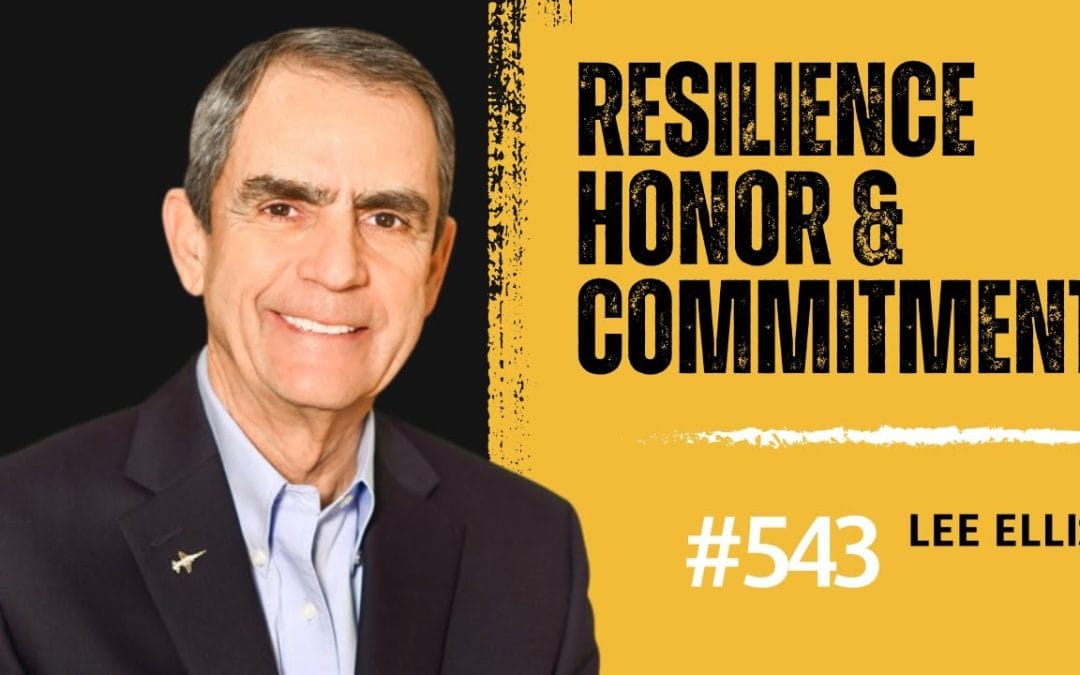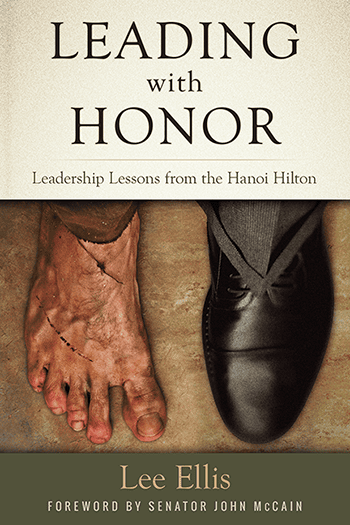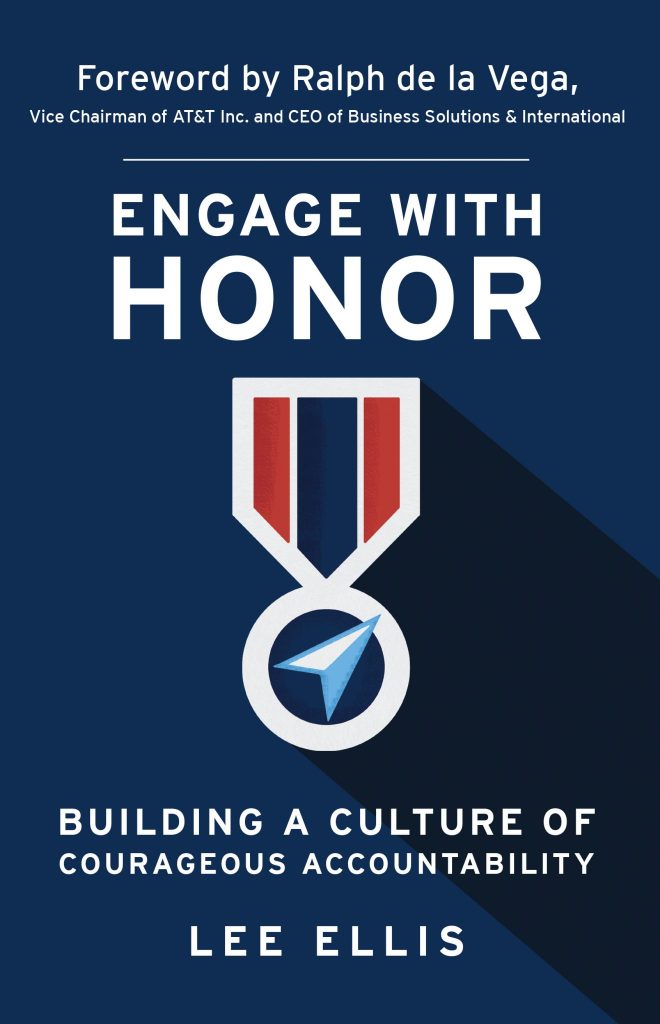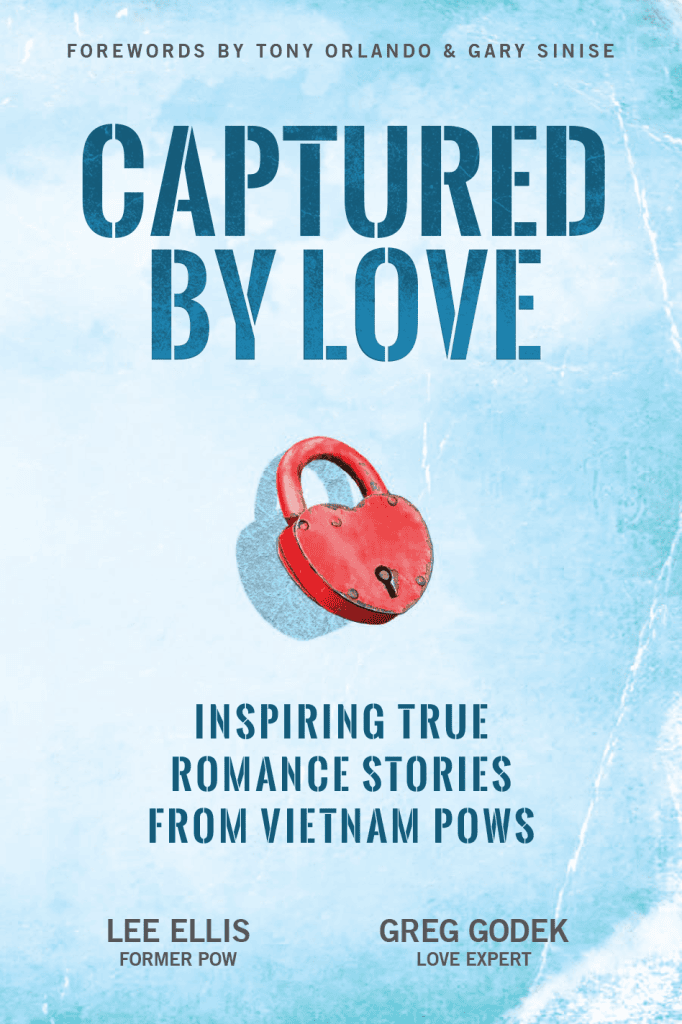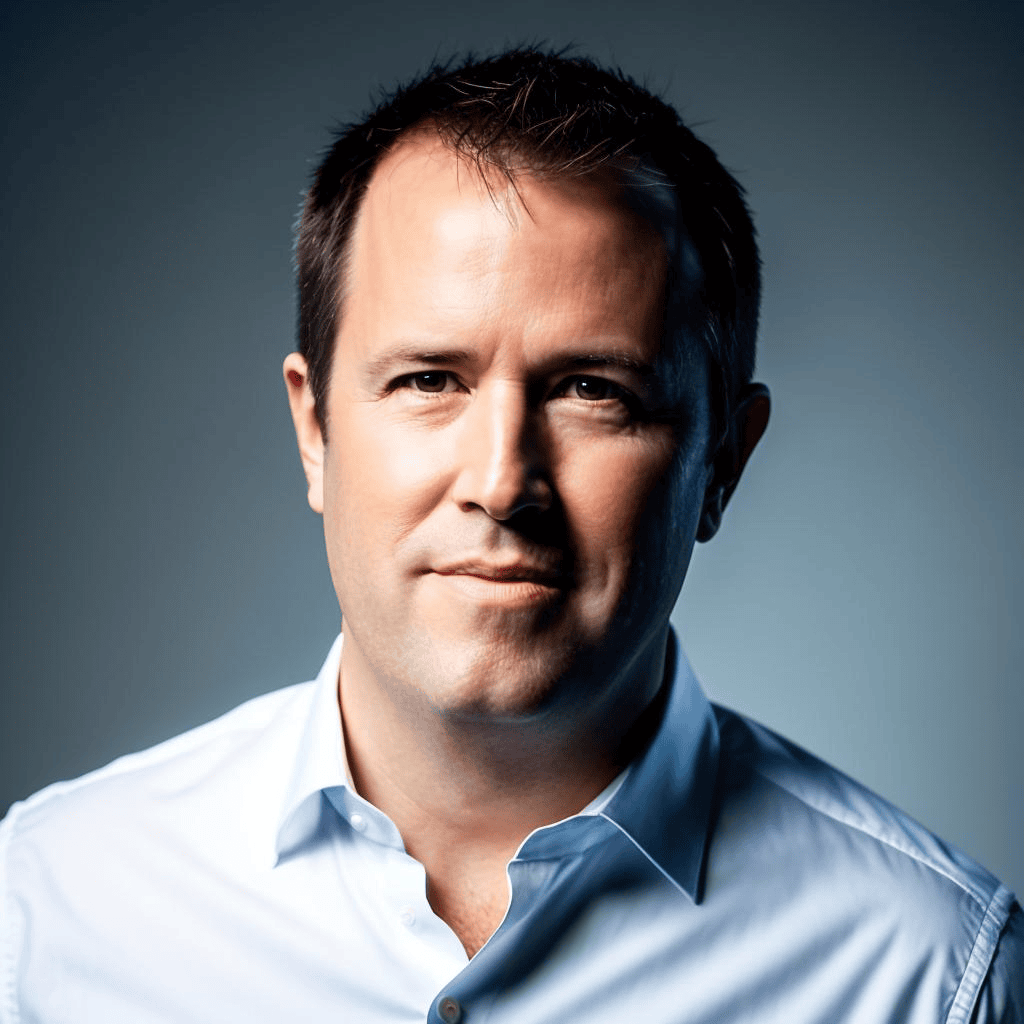You don’t build resilience by talking about it.
You build it by setting a mission, keeping commitments under pressure, and surrounding yourself with a community that tells you the truth when you falter and helps you bounce back.
That’s the throughline of Lee Ellis’s story—Air Force fighter pilot, POW for more than five years in North Vietnam, and now a leadership coach—captured in his conversation with Leaders of Transformation host Nicole Jansen.
Ellis’s lived experience isn’t motivational poster material. It’s a pragmatic operating model for leaders who need to ship product, hit revenue, and steward people through volatility.
As a growth exec, I see direct parallels to the work of scaling B2B SaaS, marketplace, and complex-services companies: clarity of mission, courageous accountability, and an environment where people feel safe enough to tell you what’s actually happening.
This article distills the most actionable insights from the interview and reinforces them with current data and research, so you can apply them today across go-to-market, product, and culture.
The Core Thesis
Ellis’s message is simple and hard: know yourself, accept both your strengths and your “ugly,” make and keep commitments, and build community that elevates standards.
In his words, “You’ve got to know the good, the bad, the ugly about yourself and just own it… you’re gonna be more confident, more humble, and you can be more vulnerable.” That combination powered his unit’s survival and comeback—and it’s the foundation for resilient companies that outperform through cycles.
Books Mentioned
A Brief Context Check: What History Confirms
- Ho Chi Minh died in early September 1969, a watershed moment in the conflict and the conditions inside POW camps. (history.com)
- The “11-day war”—Operation Linebacker II in December 1972—accelerated negotiations, leading to the Paris Peace Accords signed January 27, 1973, and “Operation Homecoming” that returned 591 U.S. POWs by March 29, 1973. (afhistory.af.mil)
- The National League of POW/MIA Families, founded by Sybil Stockdale and other spouses, broke the “stay quiet” protocol, organized nationally, met with U.S. leadership, and pressed for humane treatment and release—an example of grassroots leadership and mission clarity. (pow-miafamilies.org)
Those facts validate the arc Ellis describes: the shift in camp conditions after 1969, the power of external community pressure (the wives’ movement), and the structured return of POWs in early 1973.
A Hard Look at the Longevity Claim—and What the Data Actually Shows
In the conversation, Nicole cites a striking point Ellis shared previously: former Vietnam POWs have outlived peers, with many still vibrant at 80–90. While peer-reviewed literature on “average age 86” for all POWs is limited, reporting from AARP in 2023 noted that roughly 60% of the long-term POW cohort (held five-plus years) were still alive with an average age of about 87—directionally consistent with Ellis’s observation. (aarp.org)
At the same time, VA and academic research documents elevated long-term risks for former POWs: higher dementia risk, chronic pain and neuropathies from torture, and other sequelae. Resilience did not mean absence of scars; it meant recovering, adapting, and continuing the mission. (research.va.gov)
For business leaders, here’s the point: resilience is not denial of damage. It is a disciplined path back to health and effectiveness—personally and organizationally.
Why This Matters Now: The Data on Disconnection and Mental Load
- The U.S. Surgeon General declared an “epidemic of loneliness and isolation” in 2023, linking poor social connection to a 29% higher risk of heart disease, 32% higher risk of stroke, and a 50% higher risk of dementia for older adults. The advisory calls for workplaces to build real connection—not just perks. (hhs.gov)
- Youth and young adult suicide rates climbed sharply from 2007 to 2021; more broadly, suicide rates in 2022 returned to prior peak levels nationally, with men accounting for nearly 80% of deaths—sobering signals leaders should not ignore when designing cultures and policies. (blogs.cdc.gov)
- Employee wellbeing and engagement wobbled again in 2024. Gallup reports global engagement declining and wellbeing slipping, with managers feeling it most. Translation: your frontline leaders are under strain—just as your GTM and product pivots require their best thinking. (gallup.com)
Against that backdrop, Ellis’s principles are more than inspirational—they’re a playbook.
The Resilience Operating System: From Hanoi Hilton to High-Growth Teams
Ellis and his fellow POWs converged on a system. Here are the components—and how to implement them inside your company.
1) Mission First—and Dynamic
When their mission shifted from flying combat to surviving, resisting, and returning with honor, they reframed quickly. “We were committed to our mission… If they can do it, I can do it.” That clarity created energy, standards, and cohesion.
How to apply:
- Write the one-sentence mission for your next two quarters. Make it specific and testable. Examples: “Reach $3M new ARR in logistics vertical with <6-month payback” or “Cut onboarding-to-value from 24 to 12 days.” Then socialize it until it’s muscle memory.
- When the environment changes (macro, pipeline mix, product-market signal), reframe the mission in plain language within 72 hours. Speed beats elegance.
Evidence link: Purpose and “why” aren’t soft. Strong life purpose correlates with lower all-cause mortality and reduced cognitive decline; teams with purpose and impact clarity execute better. At work, it becomes a performance system.
2) Courageous Accountability: Character, Courage, Commitment
Ellis codifies three anchors—character, courage, commitment—as the base of a “courageous accountability” model. In practice, that meant committing to resist propaganda, accepting when torture forced short-term concessions, and then bouncing back stronger. “If they beat us, we’re gonna bounce back.”
How to apply:
- Define the red lines (ethical and strategic) and the flex lines (where tradeoffs are allowed) for your GTM. Publish them.
- Institute “bounce-back reviews” after misses—30 minutes focused on what we’ll do next time, not blame. Close with one concrete recommitment per person.
Why it works: Adaptable leaders who set direction, listen continuously, and promote “challenging leadership” behaviors correlate with healthier, more resilient organizations. That shows up in financial performance through shocks. (mckinsey.com)
3) Clarify, Then Connect
Ellis’s model cycles “clarify” and “connect.” Clarify means asking the unvarnished questions: What did you mean? What’s the evidence? Connect means building the human trust required for truth-telling and recovery. He adds a tactical nudge: introverts coach themselves to smile and greet; extroverts coach themselves to listen.
How to apply:
- Make clarity a behavior: every QBR and product review requires one “assumption kill shot”—the riskiest assumption surfaced and tested.
- Institutionalize connection: require each manager to run a monthly 30-minute “Listen Only” session—no decks, just prompts on blockers and wellbeing—and to follow up on one commitment within five days.
Evidence link: Psychological safety is the single strongest driver of team effectiveness found in Google’s Project Aristotle. Teams with higher psych safety retained talent, shipped more, and innovated more. This isn’t therapy in the office; it’s conditions for speed and quality. (psychsafety.com)
4) Community Over Isolation
POWs risked punishment to communicate by tap code and through blankets along the wall. That human connection kept standards high and spirits intact. As Ellis said, “We would risk torture… to say, ‘We ain’t going home without you.’”
How to apply:
- End “voluntary isolation” on distributed teams. Replace Slack-only with lightweight rituals: weekly 15-minute small-group standups with cameras on; one quarterly in-person sprint for core squads; and a running “field log” channel where people share real wins/losses from customers without spin.
- Build a cross-functional “Resilience Council” of respected ICs and managers to pulse issues and suggest tactical fixes on cadence.
Evidence link: The U.S. Surgeon General’s advisory details quantifiable health risks of isolation; at work, disconnection drags performance and decision quality. Leaders who design for connection reduce costly attrition and unlock contribution. (hhs.gov)
5) Know Yourself—Own the “Ugly”
Ellis emphasizes radical self-knowledge: acknowledge your strengths and your rough edges. That self-acceptance enables humility and vulnerability required for real collaboration. “People don’t want anybody else to see their bad parts, but they’re actually seeing them every day.”
How to apply:
- Require every manager to share their “User Manual” (strengths, triggers, preferences, decision style, pet peeves) and refresh it twice per year.
- Partner people who are “two to three standard deviations” apart on a trait (e.g., patience) on specific projects with clear norms—Ellis and his wife are his everyday case study.
Why it works: Creating psychological safety isn’t coddling; it allows the hard conversations that speed learning and reduce hidden risk. Google documented that teams with high psych safety were more effective and retained people longer. (thecompleteleader.org)
6) Ritualize Bounce-Back
One of the most striking POW practices was immediate recovery after forced concessions. A senior teammate would say, “You did your best… you bounced back.” That small, timely affirmation reframed failure into fuel.
How to apply:
- After a lost deal, failed feature, or missed sprint: 15-minute debrief within 24 hours focused on what we’ll try next. Manager states one affirmation based on observed effort and learning. Then commit to the next experiment.
- Track “time to bounce back” as a team metric: days between miss and first corrective action live in prod or pipeline.
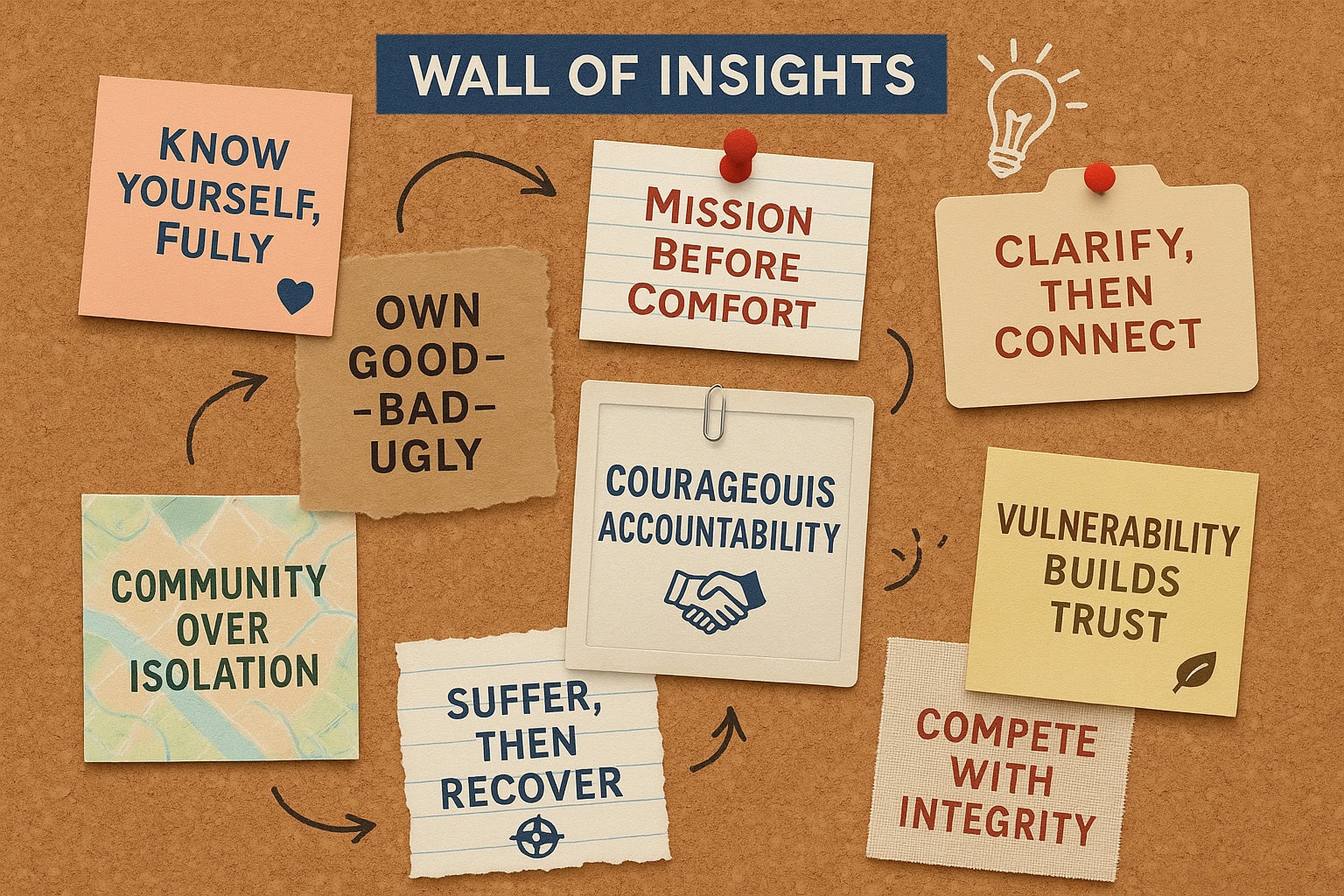
Translating POW Principles Into GTM and Product Tactics
Here’s how to operationalize these ideas in B2B environments where speed, cross-functional coordination, and capital efficiency matter.
Clarify the Mission at the “Front”
- Sales: one sentence “theater command” by segment (e.g., “Win 20 net-new logos in freight brokerages 50–500 seats with ACV >$60k and CAC payback <6 months”).
- Marketing: commit to three plays that serve that theater—e.g., partner co-selling with TMS vendors, “seconds-to-quote” story via customer proof, and analyst briefings for category legitimacy.
- Product: reduce WIP and sequence features that shorten time-to-first-value for that segment before tackling horizontal platform asks.
Tie comp, sprint reviews, and executive readouts back to the mission. Drift is the enemy.
Build Courageous Accountability Into the Cadence
- Weekly: red/yellow/green on the three mission KPIs; one “assumption kill shot” surfaced; one explicit recommitment.
- Monthly: cross-functional post-mortem on one loss and one win—pattern recognition beats hero stories.
- Quarterly: leadership “listen tour” (20 minutes per team) to collect emerging obstacles; publish two action items you will take in response.
Engineer Community and Psychological Safety Without Losing Edge
- Start senior staff with a two-minute “risk I took last week” round robin. It normalizes vulnerability and over time increases candor on real risks.
- Rotate “devil’s advocate” to argue for the competing hypothesis in product and forecast meetings, then celebrate the best contrarian insight.
- Run one customer council per quarter with unfiltered feedback to build shared reality.
Project Aristotle’s core insight: psychological safety is a performance accelerant, not a substitute for standards. (psychsafety.com)
What the Data Says About Purpose, Performance, and Health
- Higher life purpose is associated with lower all-cause mortality among older adults; more recent work suggests it’s also associated with lower risk of cognitive impairment. (jamanetwork.com)
- In companies, purpose and impact map to better retention, engagement, and decision speed when combined with clarity and accountability—core to what we ask of managers in high-change environments.
Why to care as a CEO/PE partner: Purpose isn’t “nice to have.” It’s an asset that reduces turnover, increases throughput, and shortens learning cycles—especially when the market shifts.
Honoring the Wives’ Leadership: A Case Study in External Pressure and Stakeholder Strategy
The wives of POWs rejected a failing “keep quiet” policy, organized as the National League of POW/MIA Families, and forced the issue into the public square. They met the press, petitioned governments, and pressed for humane treatment and release. It worked.
For growth companies, that’s a masterclass in stakeholder strategy:
- If a policy blocks outcomes, change the policy—even if it violates precedent.
- Build coalitions with aligned incentives (customers, partners, regulators, communities).
- Focus the narrative on clear human stakes and measurable commitments.
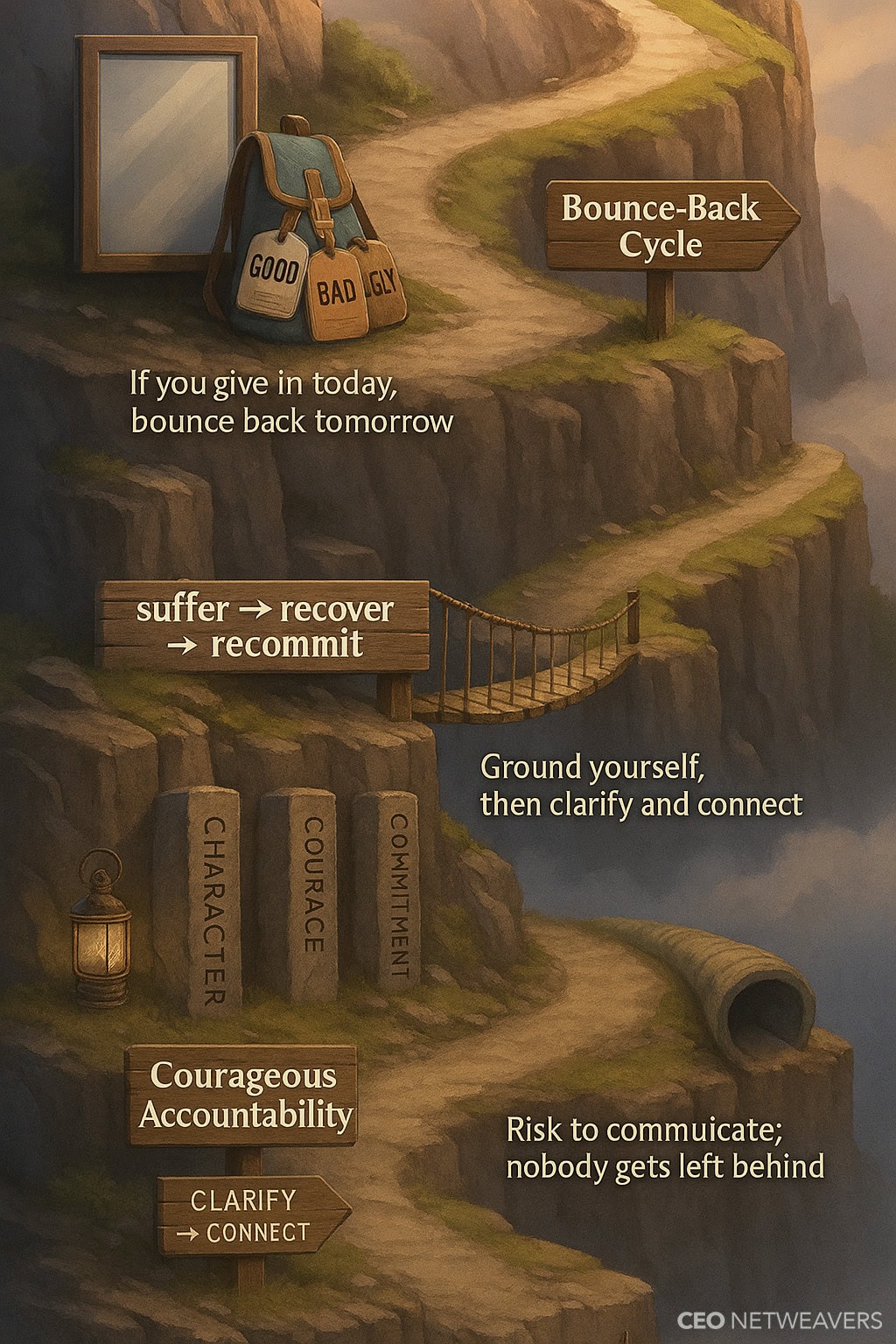
Practical Playbook: A 30/60/90 Resilience Sprint for Your Leadership Team
Week 0 setup
- Name the mission for the next two quarters in one sentence; publish it company-wide.
- Identify your top three “unknowns” that could break the mission.
Days 1–30
- Launch weekly 30-minute “clarify/connect” cadence: one assumption kill shot; one recommitment; one human check-in.
- Run two “bounce-back” reviews on a recent miss; ship a corrective action within five business days.
- Publish manager “User Manuals” and model yours first.
Days 31–60
- Start monthly Listen Only sessions per manager; track follow-ups.
- Stand up the cross-functional Resilience Council; give it a simple charter: surface frictions, recommend experiments, report outcomes.
- Pilot one psychological-safety ritual in exec staff (e.g., “risk I took last week”).
Days 61–90
- Tie variable comp or OKRs to the single mission; remove or de-weight misaligned goals.
- Host a customer council; record and share the unfiltered feedback, then act on two points within 30 days.
- Publish a 1-page “Lessons We’ll Carry Forward” memo—then get back to work.
What Makes Nicole Jansen’s Platform Distinct
Leaders of Transformation consistently serves founders, executives, and change agents seeking practical tools with a human core. The show’s positioning—transformational leaders and difference-makers—aligns with the system Ellis describes: mission, character, commitment, and community. If you’re building a resilient team, add the show to your leadership development stack.
How I’d Apply This at a Mid-Market SaaS Company Right Now
- Reset the go-to-market mission by segment and sync with product sequencing. Force tradeoffs.
- Require every manager to run Listen Only sessions and to publish two actions they’re taking as a result.
- Put psychological safety on the staff agenda—not as a values talk, but as a performance lever tied to forecast accuracy, cycle time, and win rate.
- Install bounce-back reviews within 24 hours of big misses. Close each review with a single sentence recommitment by the accountable owner.
Ellis and his fellow prisoners learned to suffer, recover, and carry on together. That’s the culture of high-performance organizations that last.
Final Takeaway and Call to Action
Resilience is not a mood. It’s a management system: mission clarity, courageous accountability, and engineered community. If you lead a GTM or product org, put one of Lee Ellis’s practices into motion this week:
- Write the one-sentence mission.
- Schedule a Listen Only session.
- Run a bounce-back review within 24 hours of the next miss.
- Share your two-page “User Manual” with your team.
Then repeat. Standards rise. People grow. Outcomes follow.
If this resonated, queue up Leaders of Transformation and share this article with your staff. And if you’re a CEO or PE partner preparing for a hard pivot, commit your team to a 90-day resilience sprint. The market won’t wait—and your people are ready to rise when you lead.
Questions to Consider
Here are 10 discussion questions drawn from the content and core themes in this episode with Lee Ellis and host Nicole Jansen, if you take the 5 minutes to ponder them.
- Self-Knowledge as Leadership Foundation:
Lee Ellis emphasizes the importance of knowing “the good, the bad, the ugly about yourself.” How can leaders actively cultivate this self-awareness within themselves and their organizations? - Resilience in Adversity:
How did Lee’s experience as a POW shape his understanding of resilience, and what parallels can today’s executives draw when navigating their company through crisis or rapid change? - The Power of Mission:
Ellis credits a clear sense of mission as critical for survival and thriving—even after captivity. How does mission clarity serve as a performance lever for executive teams? What does it look like to “change the mission” as circumstances evolve? - Community and Connection:
Lee describes the life-saving value of community—both inside prison camps and in professional life. In the age of remote work and digital isolation, what practical systems can senior leaders put in place to foster true connection? - Character, Courage, and Commitment:
Lee discusses his framework of “character, courage, and commitment” for building healthy organizations. How do these traits show up in leadership decision-making, especially under pressure? - Handling Failure and Bouncing Back:
After moments of failure or being “beaten” by adversity, Lee and his peers practiced bouncing back. How can executive teams build cultures that normalize learning from setbacks, rather than punishing them? - The Hidden Strength in Vulnerability:
Ellis argues that true confidence allows for vulnerability and humility. What are some high-leverage ways leaders can model vulnerability to build trust across the company? - Cross-Functional Collaboration:
In high-stakes environments, Lee points to the necessity of collaboration—sometimes risking personally for the good of others. How can C-suites break down silos to create more “all-in” collaboration? - The Women Behind Transformation:
The wives and families of POWs played an essential role in changing U.S. and international policy. What can businesses learn about advocacy, persistence, and activating “informal networks” from their example? - Sustaining Impact and Legacy as a Leader:
Lee’s post-military work focuses on spreading lessons through books, speaking, and coaching. As experienced executives reach later career stages, how should they think about investing their influence—beyond traditional P&L results?
These questions are designed to spark deeper reflection and peer-level discussion around Lee Ellis’s earned wisdom as shared in this episode.
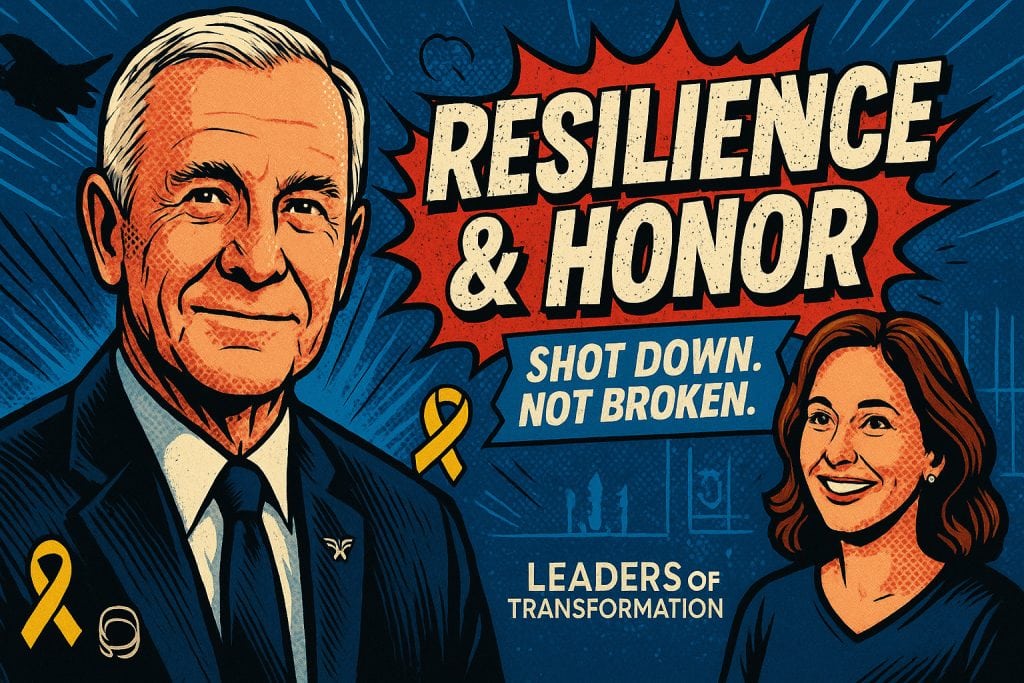
Memorable Lee Ellis Quotes
- “You gotta know yourself. You got to know the good, the bad, the ugly about yourself and just own it.”
- “I went from plowing mules to flying supersonic jets in less than 10 years.”
- “We learned to bounce back. We learned to suffer. You got to suffer. Everybody has to suffer in life.”
- “If they beat us, we’re going to bounce back and we aren’t going to let them beat us next time.”
- “Every day we tried to get a little healthier psychologically, mentally and physically, and it really worked.”
- “The more you believe in yourself, the more humble you can be, the more you can look at yourself and look at others.”
- “If you see something different here, you come and tell me, I want you to be courageous. Don’t be afraid.”
- “You’ve got to be connected with people at the heart level and let them know you care about them.”
- “Introverts have to coach themselves to smile and listen to other people. And extroverts have to coach themselves to shut up and listen.”
- “You gotta connect with other people’s hearts.”
- “Our faith became very strong. And a lot of guys, that amazing fighter pilots would spend hours a day praying and focusing on connecting with the Lord.”
Memorable Nicole Jansen Quotes
- “I would have never had the opportunity to meet you without this podcast.”
- “My favorite, one of my favorite movies is Top Gun. And it’s one thing to see it in a movie. It’s another thing to live it like you’ve lived it.”
- “You retire at 65… but actually, that’s not how we’re designed.”
- “I always say leaders of transformation take action. And sometimes the action is reflecting.”
Companies, Products, or Services Mentioned
CEO Netweavers
The National League of POW MIA Families
Ross Perot

